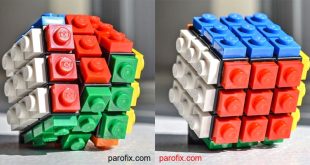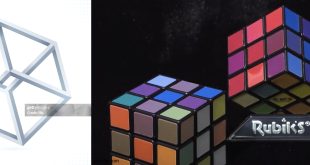Can You Conquer the 21×21 Rubik’s Cube?
For puzzle enthusiasts and hardcore speedcubers, the 21×21 Rubik’s Cube represents the ultimate frontier of twisting and turning madness. If you’ve ever solved a 3×3 or even a 7×7, imagine multiplying the challenge exponentially. I’ve spent countless hours with smaller cubes, and the thought of a 21×21 had me simultaneously excited and slightly terrified—like standing at the edge of a cliff with a parachute that might just be a sticker.
The Technical Marvel Behind the 21×21 Cube
The 21×21 Rubik’s Cube isn’t just a bigger version of the classic cube. Its mechanical complexity is staggering:
- 1,764 individual pieces: Yes, 21x21x6 faces equals 1,764 moving parts that must align perfectly.
- Advanced core system: To keep all pieces in place while allowing smooth rotation, manufacturers use multi-tiered internal mechanisms often only seen in custom or high-end cubes.
- Precision engineering: Each piece must be cut to exact tolerances—tiny misalignments can cause lock-ups or even breakage.
Practical tip: Always store the cube on a flat surface and handle rotations gently. A single aggressive twist can misalign dozens of pieces.
Can Beginners Attempt a 21×21 Cube?
Short answer: Technically yes, but realistically, it’s an extreme challenge. Beginners often start with 2×2 and 3×3 cubes to develop fundamental skills, finger dexterity, and algorithm memorization. Skipping straight to 21×21 is like hopping on a high-speed e-bike without learning to balance—it’s thrilling, but not advised.
My personal experiment: I once tried solving a 13×13 as a “warm-up” for larger cubes. Two hours in, I realized I had mixed edge pieces and lost track of center alignment. That experience taught me the importance of strategy and patience when attempting ultra-large cubes.
Step-by-Step Strategies for Tackling the 21×21 Cube
- Layer Reduction: Solve centers first, then edges, gradually reducing the massive puzzle into manageable layers.
- Edge Pairing: Grouping similar-colored edge pieces is critical. Patience and systematic approaches are key here.
- Algorithm Planning: Use known reduction algorithms from 7×7 or 13×13 cubes as a base, adapting them to the increased complexity.
- Sectioning: Divide the cube mentally into quadrants or slices. Tackling one section at a time avoids overwhelm.
Frequently Asked Questions
How long does it take to solve a 21×21 cube?
For most humans, solving the 21×21 can take anywhere from 12 to 24 hours, depending on experience. Speedcubers may reduce this time slightly, but endurance and focus are more important than speed.
Is it worth buying a 21×21 cube?
If you’re a collector or a puzzle enthusiast looking for a serious challenge, yes. However, due to size, price, and fragility, it’s not a casual purchase.
Do large cubes like the 21×21 have sustainability concerns?

Many large cubes are made from high-quality plastics and engineered to last for years. However, production is energy-intensive. That’s why I encourage combining hobby pursuits with sustainable transport habits, like commuting via e-bike instead of driving. Both feed your mind and protect the planet!
Can you customize or lubricate the 21×21 cube?
Yes, lubrication is essential for smoother turns, and tensioning adjustments may be possible depending on the brand. Handle with care—improper adjustments can easily break the delicate internal core.
Future Trends in Ultra-Large Cubes
Much like e-bikes revolutionize urban mobility, puzzle innovations continue to push boundaries. Upcoming trends include:
- Smart Cubes: Bluetooth-enabled mega cubes track solving time, provide algorithm suggestions, and connect with online communities.
- Eco-Friendly Manufacturing: Biodegradable plastics, recycled materials, and energy-efficient production methods.
- Custom 3D-Printed Cubes: Hobbyists can print unique shapes or colors for a fully personalized puzzle experience.
Personal Experience and Anecdotes
One weekend, I attempted to tackle a 17×17 cube as a precursor to the 21×21. Over four hours, I made progress but hit a “parity error” that left me staring at mismatched edge pieces. That day taught me two things: patience is non-negotiable, and solving mega cubes is as much a mental endurance exercise as it is a spatial challenge.
Highlighted tip: Break your solving into timed sessions. Attempting the 21×21 in a single stretch can lead to errors, fatigue, or frustration.
Practical Tips for Conquering Ultra-Large Cubes
- Maintain focus: Set aside dedicated time without distractions.
- Document progress: Keep notes or photos of complex sections to avoid confusion.
- Use high-quality lubrication: Reduces friction, prevents wear, and allows smoother rotations.
- Join communities: Online forums and clubs offer tips, solve guides, and moral support.
Connecting Puzzles and Sustainability
While tackling a 21×21 cube may not directly reduce carbon emissions, hobbies like this can complement a sustainable lifestyle. Think of it this way: commuting by e-bike frees time for mental pursuits like puzzling while contributing to a greener planet. Both activities—brain exercise and sustainable transport—foster personal growth and environmental awareness.
Conclusion
Conquering a 21×21 Rubik’s Cube is no small feat. It demands patience, strategy, precision, and a little bit of madness. But for those willing to invest the time, it offers unparalleled satisfaction, cognitive stimulation, and bragging rights among puzzle communities. Whether you’re a beginner dreaming of a future conquest or a veteran collector eyeing the next ultra-large challenge, the 21×21 cube represents the pinnacle of problem-solving adventure. And remember, while you conquer cubes, consider conquering urban commutes sustainably with an e-bike—your mind and the planet will thank you.
 Electric Bike & Bicycle Repair Hub Master DIY electric and traditional bike repairs with practical tips and trusted product recommendations.
Electric Bike & Bicycle Repair Hub Master DIY electric and traditional bike repairs with practical tips and trusted product recommendations.



